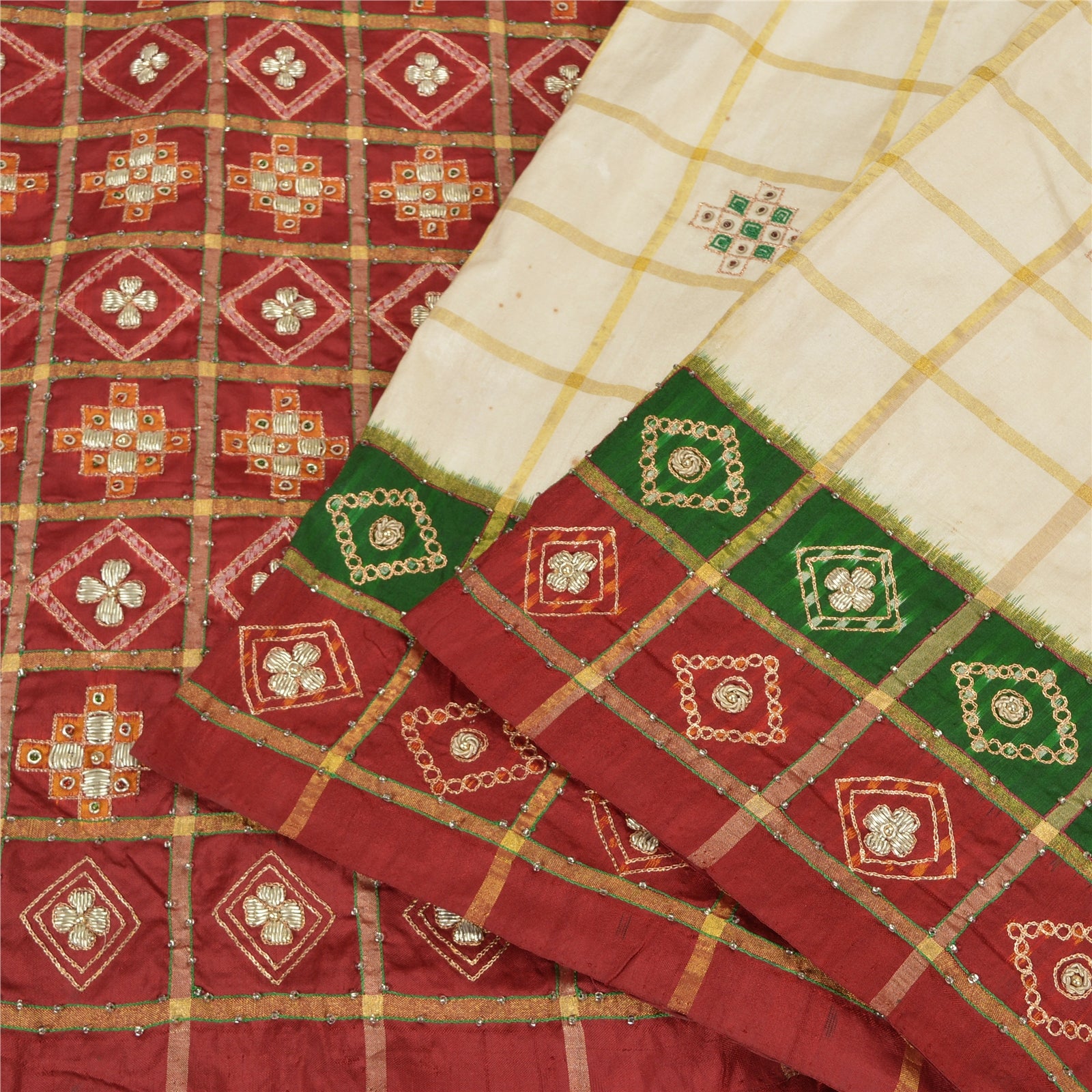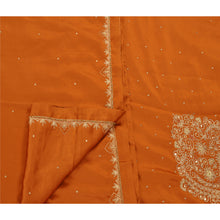
Gujarat Famous Sarees
Gujarat, a vibrant state in western India, boasts a rich and diverse textile heritage that has been deeply intertwined with its culture, history, and economy for centuries. The state is renowned for producing some of the most exquisite and unique fabrics and sarees, each telling its own story through intricate craftsmanship, traditional techniques, and vibrant colors. Gujarat's textile industry is not only a testament to the skilled artisans of the region but also a reflection of the state's ability to preserve and innovate age-old traditions in the modern era.

Historical Significance
The textile industry in Gujarat has ancient roots, with evidence of cotton cultivation and weaving dating back to the Indus Valley Civilization. Over the centuries, Gujarat became a major hub for textile production and trade, benefiting from its strategic coastal location that facilitated trade with various regions, including Africa, the Middle East, and Southeast Asia. The region's textile traditions were further enriched by the cultural exchanges that occurred through these trade routes.
During the Mughal period, Gujarat's textiles gained even more prominence, as the Mughals were patrons of fine arts and craftsmanship. This period saw the development and refinement of various textile techniques that are still practiced today. The British colonial era also had a profound impact on Gujarat's textile industry, with the introduction of mechanized production methods. However, the region's artisans continued to preserve their traditional methods, which remain integral to Gujarat's textile identity.
Types of Sarees in Gujarat – Some genius discovered that six yards of unstitched fabric could be made into a complete garment. He or she did not know that this outfit would become a fashion statement and transcend time. Each region of the country has at least one unique weave.
- Bandhani sarees
- Patola Sarees
- Paithani Sarees
- Panetar Sarees
- Chanderi Sarees
- Maheshwari Sarees
- Gharchola
- Gujarati Brocade Sarees
- Khari and Tinsel Embroidery Sarees
1. Bandhani sarees – one of the most popular in this region, are the mainstay of Gujarati and Rajasthani crafts. Bandhni is “to tie”. This traditional tie-and-dye technique uses the cloth to be pulled with your fingernails.
Then the fabric is tied in small or large circles of dye resist depending on the desired pattern. The most popular combination is red and black, but there are many other colour options available in silk, cotton, and chiffon.


2. Patola Sarees - Patola saree, the pride of Gujarat is a double-ikat weave that creates the cream layers of the saree. The yarn is dyed in both weft and warp before it is woven. This sets the stage for the intricateness of the whole matter. Master craftsmen then lay them out with care.
A single thread can ruin the entire pattern. The saree will be more costly if it has more detailed and clear details. Although the designs are primarily geometric, other patterns like florals, animal prints and abstracts are popular as well.

3. Paithani Sarees - The Paithani, named after the Maharashtra town of Paithan, is one of the most expensive Indian sarees. It features an oblique, square design and a peacock pallu. It is basically a gold and silk saree with no cotton. It is a simple weave but kaleidoscopic colours are also very popular.

4. Panetar Sarees- The panetar saree, which is an essential part of Jain Gujarati and Hindu weddings, is another variation of bandhani work. The bride usually receives it from her maternal uncle. She wears it at the start of the wedding ceremony.
This saree is made in silk or the shape of a Chaniya Choli. It has a white body and a red border. The white body is decorated with intricate bandhani motifs, in either green or golden. The bride looks stunning with the zari or linear stripes.

5. Chanderi Sarees- Chanderi, the drape of the royals is believed to have been created by Shishupala, Krishna’s cousin. The Chanderi saree’s transparency and glossy finish are what distinguish it. These sarees were traditionally woven on a white, beige, or black base.
Today, they are available in many other colours and combinations. Chanderi is traditionally woven in pure cotton or pure silk. However, there are many variations of cotton-silk sarees. This beautiful saree is made with floral art, geometric prints, and peacocks.

6. Maheshwari Sarees – The beautiful Maheshwari weave was born in Madhya Pradesh’s small town of Maheshwar. It flourished under Rani Ahilya Bai Holkar’s patronage. The nine-yard silk scarf is a visual representation of the splendour of Madhya Pradesh’s forts, palaces, and temples.
Popular designs include the mat (also known as the ‘chatai pattern) and ‘chameli-ka phool’. These sarees continue to incorporate classic patterns like the ‘eent (brick), and the ‘heera (diamond). Because of their lightweight and glossy finish, these beautiful weaves are very popular.

7. Gharchola - Gharchola literally means “homeware”. This is not the correct term as these sarees can be considered “home wear”, and are preferred by Rajasthani and Gujarati brides due to their bright colours and zari work.
They are usually made in the auspicious colours of red and green, but can also be distinguished by their unique grid pattern. A typical Ghar Chola is made from 12 squares (also known as bar baghor) or 52 squares (also called Bhavan-bhag). The bandhani patterns are repeated throughout the length of the saree by each check being tied and dyed.


8. Gujarati Brocade Sarees – These beautiful sarees are almost extinct and authentic Gujarati Brocade is very rare. These sarees, made from silk, are characterized by circular buti designs that run along the length of the saree. They were the first to use inlay work and often have leaves, flowers, and stems that are outlined with a fine dark line. This gives the flowers a royal appearance.

9. Khari and Tinsel Embroidery Sarees- These sarees are a symbol of the identity of prominent ethnic groups such as the Abaris and Sodha rajputs. They have also become a popular choice for women. These sarees were once made from silk, velvet, and brocade fabrics. Today, however, these materials are replaced by zari. These sarees are also known as Roghan in Saurashtra, Roghan in Kutch and Khari in Surat. Their metallic work gives them a stunning three-dimensional effect.

Conclusion
Gujarati sarees do have something unique to them that captures everyone’s attention and lures them into eventually buying one of the Gujarati saree types. These sarees are one of a kind in the sense that they offer a wide variety of patterns and designs for saree lovers.
